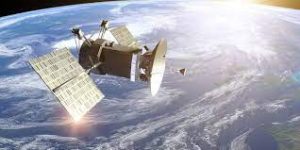24 Nov 2021 ‘Matosinhoz Manifesto’: Europe

- The Council of the European Space Agency (ESA) has approved a declaration to accelerate the use of space in Europe.
- Basically the Council adopted a resolution that sets out Europe’s strategy in terms of maintaining and expanding its activities in space.
- In addition, the Council has recognized two missions to strengthen European leadership in science, technology development and inspiration, the Mission ‘Returning Samples from the Moon’ and ‘Human Space Exploration’.
Key points
Regarding the resolution:
- The resolution defines three ‘accelerators’ to further advance Europe’s space ambitions.
Space for a Green Future:
- Space projects, which enable it to understand the planet’s current state and help achieve net-zero greenhouse gas emissions by the year 2050, are an important part of Earth observation satellites and their data collection.
Rapid and flexible response in times of crisis:
- Space applications that allow nations to manage any crisis more effectively.
- Example: Earlier this year (2021) parts of Europe saw severe flooding and wildfires. Furthermore, the latest report by the ‘Intergovernmental Panel on Climate Change’ (IPCC) flagged frequent weather events, such as heatwaves, extreme rainfall and rising sea levels. Some of these factors can affect the way wildfires spread.
Conservation of space assets:
- Russia’s use of a missile to destroy a satellite in orbit has recently highlighted the need for new systems to protect European astronauts and satellites from interference.
Importance:
- It will address the urgent and unprecedented social, economic and security challenges facing Europe and its citizens.
- There is enormous untapped potential in space to help address these challenges and there is an urgent need to accelerate the development of European space capability.
European Space Agency (ESA):
- ESA is an intergovernmental organization formed in 1975 with the aim of developing Europe’s space capabilities.
- The organization has 22 member countries – Austria, Belgium, Czech Republic, Denmark, Estonia, Finland, France, Germany, Greece, Hungary, Ireland, Italy, Luxembourg, Netherlands, Norway, Poland, Portugal, Romania, Spain, Sweden, Switzerland and United Kingdom. Slovenia, Latvia and Lithuania are associate members.
Related Projects:
- Sentinel Satellite
- Vision Mission to Venus


No Comments